|
|
| Übersicht – Contents: | |
|
|
| Übersicht – Contents: | |
Flaggen – Flags: |
|
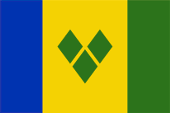 |
seit/since 1985, National-, Staats- und Handeslflagge – national, state and merchant flag, Seitenverhältnis – ratio 2:3, Quelle/Source, nach/by: Flags of the World   |
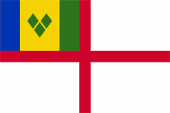 |
seit/since 1979, Flagge der Küstenwache – flag of the Coast Guard, Seitenverhältnis – ratio 2:3, Quelle/Source, nach/by: Flags of the World |
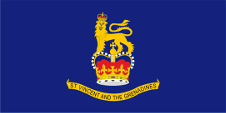 |
seit/since 1979, Flagge des Generalgouverneurs – flag of the Governor General, Seitenverhältnis – ratio 1:2, Quelle/Source, nach/by: Flags of the World |
historische Flaggen – historical Flags: |
|
|
|
|
St. Vincent – Saint Vincent: |
|
 |
16. Jhd./cent., Die Insel gehört zum spanischen Machtbereich – The island belongs to the Spanish sphere of influence, Quelle/Source, nach/by: Wikipedia (EN) |
 |
1776–1779, 1783–1801 Flagge von Großbritannien – flag of United Kingdom, Quelle/Source, nach/by: Die Welt der Flaggen    |
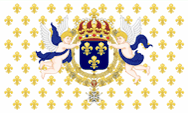 |
1779–1783, Flagge Frankreichs – flag of France, Quelle/Source, nach/by: Sodacan [CC BY-SA 3.0], via Wikimedia Commons  |
 |
1801–1975, Union Flag → quasi Nationalflagge, Flagge von Großbritannien – flag of United Kingdom, Seitenverhältnis – ratio 1:2, Quelle/Source, nach/by: Wikipedia (EN)    |
 |
1864–1975, |
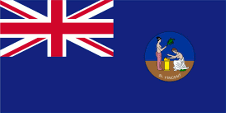 |
1877–1907, Flagge der Regierung (Staatsflagge) – flag of the government (state flag), Seitenverhältnis – ratio 1:2, Quelle/Source, nach/by: Flags of the World |
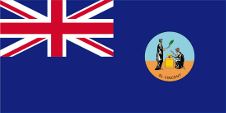 |
1907–1975, Flagge der Regierung (Staatsflagge) – flag of the government (state flag), Seitenverhältnis – ratio 1:2, Quelle/Source, nach/by: Flags of the World |
 |
1975–1979, National-, Staats- und Handeslflagge – national, state and merchant flag, Seitenverhältnis – ratio 1:2, Quelle/Source, nach/by: Flags of the World |
 |
1979–1985, National-, Staats- und Handeslflagge – national, state and merchant flag, Seitenverhältnis – ratio 4:7, Quelle/Source, nach/by: Flags of the World |
 |
1985 (Mar–Oct), National-, Staats- und Handeslflagge – national, state and merchant flag, Seitenverhältnis – ratio 4:7, Quelle/Source, nach/by: Flags of the World |
|
|
|
Windward-Inseln – Windward Islands (1833–1958): |
|
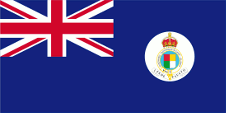 |
1886–1958, zweifelhaft – doubtful, Flagge der Regierung (Staatsflagge) – flag of the government (state flag), Seitenverhältnis – ratio 1:2, Quelle/Source, nach/by: Flags of the World |
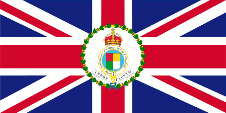 |
1886–1960, Flagge des Gouverneurs – flag of the Governor, Seitenverhältnis – ratio 1:2, Quelle/Source, nach/by: Flags of the World |
|
|
|
Westindische Föderation – Federation of the West Indies (1958–1962): |
|
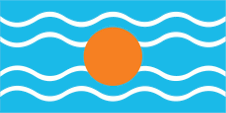 |
Flagge der Westindischen Föderation – flag of the Federation of the West Indies, Seitenverhältnis – ratio 1:2, Quelle/Source, nach/by: Flags of the World |
 |
Flagge des Generalgouverneurs – flag of the Governor General, Seitenverhältnis – ratio 1:2, Quelle/Source, nach/by: Flags of the World |
|
Die heutige Flagge von
St. Vincent wurde am 21.10.1985 eingeführt. Sie zeigt drei senkrechte
Streifen in Blau, Gelb und Grün, im Verhältnis 1:2:1. Im breiten gelben
Mittelstreifen bilden drei stilisierte grüne Diamanten ein "V". Die Farbe
Blau repräsentiert den Ozean, Gelb die Naturreichtümer und Grün die
Vegetation der Insel und deren Fruchtbarkeit. Nach einer anderen Auslegung
steht Blau für den Himmel, Gelb für die Sonne und Grün für die üppige
Vegetation auf der Insel. Die drei grünen Diamanten in V-Formation stehen
für "Vincent", und verkörpern den Spitznamen der Inseln: "Edelsteine der
Antillen", allerdings erinnern sie auch an das Blatt des Brotfruchtbaumes
auf der vorher gültigen Flagge. Da das Land dem britischen Ensign- und
Farbensystem folgt, werden die Farben der Flagge dem Spektrum entsprechen,
welches das britische Verteidigungsministerium in seiner Publikation mit
Vorschiftscharakter "Flags of all Nations" für folgende Farben angibt: Grün
= pt 364 c, Rot = pt 186 c, Gelb = pt 116 c, Blau = pt 286 c. Seit 1783 gehörte die Insel endgültig zu Großbritannien, so das ab jenem Jahr die Flagge von Großbritannien unangefochten über den Inseln wehte, die zwischen 1838 und 1958 administrativ zur britischen Kolonie der Windward-Inseln gehörte. Die Windward-Inseln waren Teil des United Kingdom, hatten eine eigene Verwaltung und einen eigenen Gouverneur. An Land, bis 1864 auch zur See, repräsentierten der einzelne Bürger und auch die Behörden ihren Status als Bürger oder Organe des United Kingdom, durch die Verwendung des Union Jack, "Union Flag" genannt. Großbritannien hatte in Jahr 1864 ein Flaggensystem eingeführt, in dem: • Kriegsschiffe einen sogenannten "White Ensign" (Marineflagge), eine weiße Flagge oft mit durchgehendem roten Georgskreuz und mit dem Union Jack in der Oberecke, • Handelsschiffe einen "Red Ensign" (auch "Civil Ensign" → Bürgerflagge genannt, die eigentl. Handelsflagge), eine rote Flagge mit dem Union Jack in der Oberecke, und • Dienstschiffe einen "Blue Ensign" (Regierungsflagge → die eigentliche Staatsflagge), eine blaue Flagge mit dem Union Jack in der Oberecke führten. Seit 1865 durften Schiffe von Kolonialregierungen einen Blue Ensign mit einem Badge (Abzeichen) im fliegenden Ende verwenden. Für alle anderen Zwecke war ab diesem Zeitpunkt an Land ausschließlich der britische Union Jack zu verwenden und zur See die übliche rote britische Handelsflagge, der "Red Ensign". Wenn die britische Admiralität der Kolonie die entsprechende Erlaubnis erteilt hatte, durften Handelsschiffe und private Seeleute dieser Kolonien einen Red Ensign mit dem Bagde führen. Dies war für die Windward-Inseln oder St. Vincent nicht der Fall. Die jeweiligen Regierungen sollten entsprechene Bagdes zur Verfügung stellen. Ein solches Badge war oft eine auf einer Scheibe platzierte regionale landschaftliche Darstellung, zeigte oft Schiffe, historische Begebenheiten oder konnte auch nur eine Art Logo sein. Sehr oft zeigte ein Badge zusätzlich den Namen des Landes oder auch einen Wahlspruch. Einige Besitzungen hatten aber auch schon von Anfang an ein Wappen, bzw. erhielten über die Jahre eine eigenes Wappen und das Badge wurde abgeschafft. Um ein weitgehend einheitliches Erscheinungsbild im fliegenden Ende der Flaggen zu gewährleisten, wurden Wappen und auch andere Symbole auf einer weißen Scheibe in der Größe der früheren Badges dargestellt. Es gab hier aber auch Ausnahmen, denn einige Kolonien verwendeten diese weiße Scheibe nicht, und platzierten ihr Wappen oder auch nur das Wappenschild - manchmal auch vergrößert - direkt auf das Flaggentuch. Schon in den 40-er Jahren wurde dazu übergegangen die weißen Scheiben zu entfernen und das Wappen direkt zu platzieren oder vergrößert dazustellen. Dieser Umstellungsprozess erfolgte allmählich, nirgendwo gleichzeitig und vollständig. In einigen britischen Besitzungen sind bis heute Flaggen mit der weißen Scheibe in Gebrauch, in anderen nicht mehr und in einigen Gebieten gibt es beide Varianten nebeneinander. Die Windward-Inseln erhielten im Jahre 1886 ein eigenes Badge. Es zeigte einen vierfach geteilten Schild mit den Farben Rot, Gelb, Grün und Weiß, umgeben von einem weißen Gurt mit der Inschrift "Governor in Chief, Windward Islands", oberhalb die britische Krone. Unterhalb ein weißes Spruchband mit dem Motto der Inseln: "i pede fausto" → "Gehe mit gesegnetem Fuß". Die einzelnen Kolonien der Windward-Inseln führten jedoch ihre eigenen "Blue Ensigns" mit einem eigenen Badge, lediglich der Gouverneur nutzte das Badge auf seiner Flagge. Ein "Blue Ensign" für die Windward-Inseln könnte dennoch existiert haben. Ab 1877 verwendete die Regierung von St. Vincent, als britische Kolonie, die blaue britische Dienstflagge (Blue Ensign) mit einem Badge im wehenden Teil der Flagge. Das 1877 eingeführte Badge zeigte zwei klassisch gekleidete allegorische Frauengestalten (Friede und Gerechtigkeit), die an einem Altar opfern. Bis 1907 war unteren Bereich des Badges der Name des Landes zu finden: "St. Vincent", ab 1907 stand dort das Motto der Kolonie: "Pax et Justitia" → "Friede und Gerechtigkeit". Ab 1979 wurde der "Blue Ensign" nicht mehr verwendet, denn der Vorgänger der heutigen Flagge wurde eingeführt. Gleichzeitig war die Kolonie von 1958 bis 1962 Teil der Britischen Kolonie "Westindische Föderation", ein Versuch die Verwaltung zusammenzufassen und auch den Unabhängigkeitsbestrebungen der zugehörigen Inseln und Kolonien entgegenzuwirken. Die Flagge der "Westindische Föderation" war ein hellblaues Flaggentuch mit vier waagerechten weißen Wellenlinien und einer goldenen Scheibe in der Mitte. Sie symbolisierte die Sonne über der Karibischen See. Über den Farbton des Blau ist man sich im Zweifel, es wird oft das übliche Britische Heraldikblau angenommen. Eine Zeitgenössische Beschreibung nennt jedoch ein "kaiserliches Blau" was Hellblau wäre und auch viele zeitgenössische Drucke zeigen dieses helle Blau. Am 27.10.1969 wurde durch Großbritannien innere Selbstverwaltung gewährt und St. Vincent wurde ein autonomer, mit Großbritannien assoziierter Staat. In diesem Zusammenhang sollte eine neue Flagge eingeführt werden, welche die Tradition der "Blue Ensigns" beendet hätte. Darauf wurde verzichtet, obwohl der Entwurf jener Flagge bereits fertig gestellt war. Im Jahre 1975 ehrhielt das Land jedoch das Recht den "Blue Ensign" mit dem Badge als National-, Staats- und Handeslflagge zu verwenden. Am 27.10.1979 wurde St. Vincent durch Großbritannien die Unabhängigkeit gewährt. In diesem Zusammenhang wurde der Vorgänger der heutigen Flagge eingeführt. Dieser war durch einen einheimischen Künstler entworfen worden, und zeigte die selben Farben wie die heutige Flagge, ebenfalls in senkrechter Anordnung, jedoch waren die Streifen gleich breit. Das englische College of Arms fügte noch schmale weiße Trennstreifen hinzu. In der Mitte des gelben Streifens befand sich das Wappen der Insel auf einem großen Brotfruchtblatt, um an Kapitän William Bligh zu erinnern, der von Tahiti einige Brotfruchtbäume als Nahrungsmittel für die Sklaven auf die Inseln brachte. Da diese – für karibische Verhältnisse sehr schöne Flagge – bei der Bevölkerung keine Zustimmung fand, wurden im März 1985 die weißen Trennstreifen entfernt. In einem weiteren Schritt wurde die Flagge zum 21.10.1985 trotz rechtlicher Bedenken durch einen schweizerischen Heraldiker in die heutige Version abgeändert. Blatt und Wappen wurden entfernt und durch drei stilisierte Diamanten ersetzt, und der gelbe Streifen wurde verbreitert. |
The todas's flag of Saint
Vincent was introduced on 21st of October in 1985. It shows three vertical
stripes in blue, yellow and green, in a ratio of 1:2:1. In the wide yellow
central stripe are placed three stylized green diamonds form a "V". The color blue represents the ocean, yellow the natural riches and green the vegetation of the island and its fertility. According to another interpretation, blue represents the sky, yellow represents the sun and green represents the lush vegetation on the island. The three green diamonds in a V-formation stand for "Vincent", and embody the nickname of the island: "Gemstones of the Antilles", but they are also reminiscent of the leaf of the breadfruit tree on the previously valid flag. As the country follows the British ensign and color system, the colors of the flag will correspond to the spectrum specified by the British Ministry of Defense in its regulatory publication "Flags of all Nations" for the following colors: green = pt 364 c, red = pt 186 c, yellow = pt 116 c, blue = pt 286 c. The island finally belonged to United Kingdom since 1783, so that from that year the flag of United Kingdom flew unchallenged over the islands, which administratively belonged to the British colony of the Windward Islands between 1838 and 1958. The Windward Islands were part of the United Kingdom, had their own administration and their own governor. On land, and until 1864 also at sea, individual citizens and the authorities represented their status as citizens or bodies of the United Kingdom by using the Union Jack, known as the Union Flag. United Kingdom had introduced a flag system in 1864 in which: • Warships use a so-called "White Ensign" (naval flag), a white flag often with a red St. George's cross throughout and with the Union Jack in the upper corner, • Merchant ships use a so-called "Red Ensign" (also called "Civil Ensign" → citizen flag, the actual merchant flag), a red flag with the Union Jack in the upper corner, and • Governmental ships use a "Blue Ensign" (flag of the government → the actual state flag), a blue flag with the Union Jack in the upper orner. Since 1865, colonial government ships were permitted to use a Blue Ensign with a badge in the flying end. From this point on, only the British Union Jack was to be used for all other purposes on land and the usual red British merchant flag, the "Red Ensign", at sea. If the British Admiralty had granted the appropriate permission to one colony, merchant ships and private sailors from this colony were allowed to use a Red Ensign with the Bagde. This was not the case for the Saint Vincent or the Windward Islands. The respective governments should provide appropriate bagdes. Such a badge was often a regional landscape representation placed on a disk, often showed ships, historical events or could just be a kind of logo. Very often a badge also showed the name of the country or a motto. However, some possessions had a coat of arms right from the start, or received their own coat of arms over the years and the badge was abolished. In order to ensure a largely uniform appearance in the flying end of the flags, coats of arms and other symbols were displayed on a white disk the same size as the earlier badges. But there were exceptions here, as some colonies did not use this white disk and placed their coat of arms or just the shield – sometimes enlarged – directly on the flag cloth. As early as the 1940s, the white discs were removed and the coat of arms was placed directly or enlarged. This transition process occurred gradually, never simultaneously and completely. In some British possessions flags with the white disc are still in use, in others they are no longer used and in some areas both variants exist side by side. The Windward Islands were given their own badge in 1886. It showed a shield divided into four parts with the colours red, yellow, green and white, surrounded by a white belt with the inscription "Governor in Chief, Windward Islands", with the British crown above. Below a white banner with the motto of the islands: "i pede fausto" → "Walk with a blessed foot". However, the individual colonies of the Windward Islands had their own "Blue Ensigns" with their own badge; only the governor used the badge on his flag. A "Blue Ensign" for the Windward Islands may nevertheless have existed. From 1877, the government of St. Vincent, as a British colony, used the blue British official flag (Blue Ensign) with a badge in the waving part of the flag. Introduced in 1877, the badge depicted two classically dressed allegorical female figures (Peace and Justice) sacrificing at an altar. Until 1907, the name of the country could be found at the bottom of the badge: "St. Vincent", and from 1907 the colony's motto was placed there: "Pax et Justitia" → "Peace and Justice". From 1979 the "Blue Ensign" was no longer used because the predecessor of today's flag was introduced. At the same time, the colony was part of the British colony "West Indian Federation" from 1958 to 1962, an attempt to consolidate the administration and also to counteract the independence efforts of the associated islands and colonies. The flag of the "West Indian Federation" was a light blue flag with four horizontal white wavy lines and a golden disc in the middle. It symbolized the sun over the Caribbean Sea. There is some doubt about the color of the blue; it is often assumed to be the usual British heraldry blue. However, a contemporary description calls it an "imperial blue" which would be light blue and many contemporary prints also show this light blue. On 27th of October in 1969, United Kingdom granted internal self-government and St. Vincent became an with United Kingdom associated autonomous state. In this context, a new flag should be introduced, which would have ended the tradition of the "Blue Ensigns". This was waived even though the design of that flag had already been completed. In 1975, however, the country received the right to use the "Blue Ensign" with the badge as a national, state and merchant flag. On 27th of October in 1979, St. Vincent was granted independence by United Kingdom. In this context, the predecessor of the today's flag was introduced. It was designed by a local artist and showed the same colours as the today's flag, also in a vertical arrangement, but the stripes were the same width. The English College of Arms added narrow white dividing stripes. In the center of the yellow stripe was placed the island's coat of arms on a large breadfruit leaf, to commemorate Captain William Bligh, who brought some breadfruit trees to the islands from Tahiti as food for the slaves. Since this flag – which was very beautiful by Caribbean standards – did not meet with popular approval, the white dividing stripes were removed in March 1985. In a further step, the flag was changed into today's version by a Swiss heraldist on 21st of October in 1985, despite legal concerns. The leaf and crest were removed and replaced with three stylized diamonds, and the yellow stripe was widened. |
| Quelle/Source: Die Welt der Flaggen, Flaggen Wappen Hymnen, Die Welt der Flaggen, Wikipedia (EN), Volker Preuß | |
Wappen – Coat of Arms: |
|
 |
seit/since 1912, Wappen von St. Vincent – coat of arms of Saint Vincent, Quelle/Source: Corel Draw 4 |
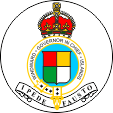 |
1886–1958, Windward-Inseln – Windward Islands, Badge (Abzeichen) – Badge, Quelle/Source, nach/by: Flags of the World |
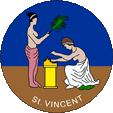 |
1877–1907, Saint Vincent, Badge (Abzeichen) – Badge, Quelle/Source, nach/by: Flags of the World |
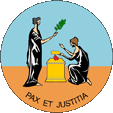 |
1907–1979, Saint Vincent, Badge (Abzeichen) – Badge, Quelle/Source, nach/by: Flags of the World |
| Das Staatswappen wurde am 29.11.1912 verliehen und unverändert beibehalten. Es zeigt einen Schild mit zwei klassisch gekleideten allegorische Frauengestalten (Friede und Gerechtigkeit), die an einem Altar opfern. Oberhalb des Schildes erscheint eine blühende Baumwollpflanze, unterhalb des Schildes der Wahlspruch des Landes: "Pax et Justitia" → "Friede und Gerechtigkeit". | The coat
of arms was awarded on 29th of November in 1912 and maintained unchanged. It shows a shield with two classical dressed allegorical wife figures (Peace and Justice), who sacrify on an altar. Above the shield appears a blooming cotton plant, below the shield the motto of the country: "Pax et Justitia" → "Peace and Justice". |
| Quelle/Source: Flaggen Wappen Hymnen | |
Landkarte – Map: |
Lage – Position: |
Landkarte des Landes – Map of the Country: |
|
|
| Zahlen und Fakten – Numbers and Facts: | |
|
|
|
|
|
|
|
|
|
|
|
|
|
|
|
|
|
|
|
1498
· der spanische Seefahrer Christoph Kolumbus entdeckt die Insel am Gedenktag
des Heiligen Vincent und nennt sie "Isla de San Vincente", die Insel wurde
Spanischer Besitz, jedoch nicht kolonisiert 1627 · England erhebt Anspruch auf die von Kariben bewohnte Insel, jedoch erfolgt keine Besiedlung oder Kolonisierung 1672 · England erhebt erneut Anspruch auf die von Kariben bewohnte Insel, jedoch erfolgt wieder keine Besiedlung oder Kolonisierung 1673 · Frankreich erhebt Anspruch auf die von Kariben bewohnte Insel, jedoch erfolgt keine Besiedlung oder Kolonisierung, die Insel wird zum neutralen Gebiet erklärt 1719 · französische Siedler erwerben Land auf den Inseln 1748 · St. Vincent wird den Kariben überlassen 1762 · Großbritannien besetzt St. Vincent und die Grenadinen 1762 · St. Vincent wird britische Kolonie 1776 · St. Vincent wird britische Kronkolonie 1779–1783 · St. Vincent ist von französischen Truppen besetzt 1793 · Kapitän William Bligh bringt von Tahiti einige Brotfruchtbäume als Nahrungsmittel für die Sklaven auf die Inseln 1795 · Aufstand der Kariben 1838 · Abschaffung der Sklaverei 1838–1958 · Teil der Britischen Kolonie der Windward-Inseln 1958–1962 · Teil der Britischen Kolonie "Westindische Föderation" 27.10.1969 · Großbritannien gewährt innere Selbstverwaltung (Autonomie als mit Großbritannien assoziierter Staat) 27.10.1979 · Großbritannien gewährt die Unabhängigkeit im Rahmen des Commonwealth of Nations |
|
1498
· the Spanish seafarer Christoph Columbus discovers the island on the day of
the Holy Vincent and names it "Isla de San Vincente", the island becomes a
Spanish possession but was not colonized 1627 · England claimes the by Caribs inhabited island, but there follows none settlement or colonization 1672 · England claimes the by Caribs inhabited island again, but there follows once more none settlement or colonization 1673 · France claimes the by Caribs inhabited island, but there follows none settlement or colonization, the island was declared for a neutral zone 1719 · French settlers acquire land on the islands 1748 · Saint Vincent is ceded to the Caribs 1762 · United Kingdom occupys Saint Vincent and the Grenadines 1762 · Saint Vincent becomes a British colony 1776 · Saint Vincent becomes a British crown colony 1779–1783 · Saint Vincent is occupied by French troops 1793 · Captain William Bligh, who brings some Bread Fruit Trees from Tahiti to the island as food for the slaves 1795 · revolt of the Caribs 1838 · abolition of slavery 1838–1958 · part of the British Colony of the Windward Islands 1958–1962 · part of the British Colony of the "Federation of the West Indies" 27th of October 1969 · United Kingdom grants interior self administration (autonomy as with United Kingdom associated state) 27th of October 1979 · United Kingdom grants independence within the framework of the Commonwealth of Nations |
| Quelle/Source: Atlas zur Geschichte, World Statesmen, Wikipedia (EN) |
| Den Namen "St. Vincent" erhielt diese Insel von Kolumbus als er sie am Tag des Heiligen Vinzenz im Jahre 1498 entdeckte. | The name "Saint Vincent" was awarded to this island by Columbus as he discovered it on the day of the Holy Vincent in the year 1498. |
| Der Heilige Vinzenz von Saragossa lebte im 3. Jahrhundert in Saragossa und war der Diakon der dortigen Kirche. Er starb um das Jahr 304 unter Kaiser Diokletian den Märtyrertod. | Saint Vincent of Zaragoza lived in Zaragoza in the 3rd century and was the deacon of the church there. He died a martyr's death around the year 304 under Emperor Diocletian. |
| Die Insel St. Vincent wurde von den durch Vermischung mit den ehgemaligen Sklaven verschwundenen Ureinwohnern "Youloumain" genannt, zu Ehren von Youlouca, dem Geist der Regenbögen. | Saint
Vincent Island was named "Youloumain" by the mix of the former slaves
with the vanished natives, in honor of Youlouca, the spirit of rainbows. |
| Quelle/Source: Wikipedia (EN) | |